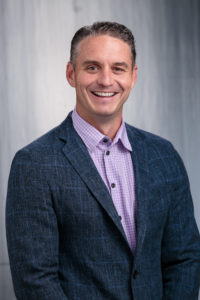“Fewer, more specialized agents and brokers empowered by technology.”
That’s how Roland Chan, CEO and Co-Founder of FindBob, responded to the question, “What does the future of commercial insurance distribution look like?”
 His response reflects the mission of his company. Unlike other InsurTech leaders we surveyed for this article, whose companies focus on customer pain points in buying insurance and agents’ struggles related to the insurance sales and marketing process, FindBob helps insurance enterprises manage, engage, retain and acquire insurance distribution talent.
His response reflects the mission of his company. Unlike other InsurTech leaders we surveyed for this article, whose companies focus on customer pain points in buying insurance and agents’ struggles related to the insurance sales and marketing process, FindBob helps insurance enterprises manage, engage, retain and acquire insurance distribution talent.
Pointing to research indicating that large numbers of agents plan to exit the insurance business in the not-too-distant future, Chan said: “Our mission is to empower the global financial services industry to take control of transition management. FindBob is an enterprise platform that’s accelerating transition behavior for insurance and financial service companies by focusing on the needs of agents and empowering the enterprise with a talent management operating system to protect and grow their book of business,” Chan said.
Basically, the name stands for “Find a Book of Business.”
In the property/casualty space, Farmers Mutual Hail Insurance Co. of Iowa (FMH) recently worked with FindBob to develop a web-based tool called FMH Bridge designed to help FMH insurance agencies identify growth opportunities. Structured as a networking platform, FMH Bridge asks each participating agency to create an anonymous profile identifying where and how they would like to grow their business and whether they are considering selling. Agencies can search for other profiles and connect with each other to buy, sell or partner on books of business.
Chan had the shortest answer, and FindBob had the most unique mission of the InsurTechs we reached out to as we queried leaders about the future of insurance distribution. More than a dozen others tackled different aspects of the insurance sales and marketing process—communicating with carriers, understanding their appetites, submitting applications, getting quick quotes, getting noticed by potential customers, etc.
Below, we present their answers to the same question—”What does the future of commercial insurance distribution look like?”—along with some of the information they provided about their companies.
 Mike Greene, CEO and Co-Founder, Hi Marley, said: “Commercial P/C is overwhelmingly distributed by agents and brokers, and we see that continuing. Rather than the end of the current distribution solutions, we see a variety of tools emerging to enhance and empower the experts in the industry who find the right coverage for their clients. This only serves to solidify agents and brokers as a flexible, responsive expert to turn to when seeking coverage. Better communication solutions [will] help agents and brokers move forward.”
Mike Greene, CEO and Co-Founder, Hi Marley, said: “Commercial P/C is overwhelmingly distributed by agents and brokers, and we see that continuing. Rather than the end of the current distribution solutions, we see a variety of tools emerging to enhance and empower the experts in the industry who find the right coverage for their clients. This only serves to solidify agents and brokers as a flexible, responsive expert to turn to when seeking coverage. Better communication solutions [will] help agents and brokers move forward.”
Hi Marley, he said, “is an AI-enabled texting platform that bridges the conversation between insureds and the entire insurance ecosystem, from carriers to their support providers. Our mission is simple—meeting insureds where they are and how they want to communicate helps make their insurance experience…lovable.”
Peter MacDonald, CEO and Co-Founder, Wunderite, said: “The immediate future looks like today—[with] a vast distribution network of agents. As consumers expect and demand more, however, insurance agencies and carriers will evolve to better serve their customers and provide additional value in line with their core competency.”
The evolution will start with the trashing of pen-and-paper processes, he suggests.

“Insurance is the original big data industry, and interest in big data/AI/ML is exploding across industries. Yet today—and this is verified from talking with hundreds of frontline employees—most insurance data and underwriting still starts with a yellow legal pad. The process of gathering insurance underwriting information is inefficient and a negative customer touchpoint, and also ill-prepared for the torrents of data being generated today by the IoT.”
“Agents and carriers that remove the friction to doing business and that leverage their aggregated torrents of data into customer insight will provide more value to their customers and succeed,” he said.
MacDonald described Wunderite as “a data exchange that seeks to bring efficiency to the insurance marketplace, transparency to stakeholders and actionable insight to decision-makers.” Having worked as an agent himself for nearly a decade, MacDonald recalled, “I would meet with my clients and take them through a really painful process every year—asking them for PDFs and Excel spreadsheets, and [then] emailing them to all my favorite underwriters—and all that data dies in the inbox,” speaking on a videotaped elevator pitch published on the website. With Wunderite, “basically, you go online [and] create a risk profile,” he said, suggesting a process as easy as creating a LinkedIn profile.
 Philip Charles-Pierre, CEO, Semsee, said: “We think that the agent will remain an important part of commercial insurance distribution, but there is a huge opportunity for technology to take the repetitive, data-entry-heavy aspects of the role off of the agent’s plate, allowing them to help their clients manage risk and choose the best policies for their businesses.”
Philip Charles-Pierre, CEO, Semsee, said: “We think that the agent will remain an important part of commercial insurance distribution, but there is a huge opportunity for technology to take the repetitive, data-entry-heavy aspects of the role off of the agent’s plate, allowing them to help their clients manage risk and choose the best policies for their businesses.”
“Commercial insurance is complicated and difficult for the typical business owner to understand. Though a digital, direct-to-consumer model may work well for less complex risks, the majority of business owners will still need an agent to help them navigate the commercial insurance space,” he said.
Explaining Semsee’s role in connecting agencies and carriers, he said the Semsee platform integrates carrier questions into one digital application, which is simultaneously submitted to carriers for quotes. “Once submitted, Semsee displays the quotes and agents are linked to the newly created client records in their carrier portals,” he explained.
 Keagan Henson, CEO and Co-Founder, BriteBee, said:”In the next five years, we foresee the quoting experience will move toward a more digital experience for the consumer. Agents will have a very important role in the digital space due to the complexity of the commercial landscape. The agent will not disappear but will have to navigate the digital space differently and creatively.”
Keagan Henson, CEO and Co-Founder, BriteBee, said:”In the next five years, we foresee the quoting experience will move toward a more digital experience for the consumer. Agents will have a very important role in the digital space due to the complexity of the commercial landscape. The agent will not disappear but will have to navigate the digital space differently and creatively.”
BriteBee, a digital directory and marketing platform, helps agents with online search intelligence. Henson said, “BriteBee helps insurance agents increase their digital exposure online…We help agents ‘bee’ found by the products they offer, niche markets they serve and carriers they represent.”
At an insurance conference earlier this year, Henson compared BriteBee to Yelp or Google My Business for agencies and agents. “We want you to shine bright to people when they’re searching online so that people can find you when they’re searching for a problem and a solution to their problem,” he said.
 Raghav Tanna, CEO and Co-Founder,Tarmika, said, “I believe that the future of commercial distribution will follow the same lines as personal lines. If agents adopt new technology and remain the efficient means of distribution, they will succeed. If agents fail to make the buying process easy, many digital D2C markets will become much more successful. We want to help in that efficient transition into a streamlined digital distribution process.”
Raghav Tanna, CEO and Co-Founder,Tarmika, said, “I believe that the future of commercial distribution will follow the same lines as personal lines. If agents adopt new technology and remain the efficient means of distribution, they will succeed. If agents fail to make the buying process easy, many digital D2C markets will become much more successful. We want to help in that efficient transition into a streamlined digital distribution process.”
Tarmika is a commercial lines comparative rating platform specifically designed for independent agents. “A single entry into the Tarmika Bridge returns multiple quotes from YOUR appointed carriers. Our mission is to enable independent agencies to continue to grow and be the chosen distribution method,” Tanna said.
 Laird Rixford, CEO, Insurance Technologies Corporation (ITC), said: “Commercial insurance distribution will be a revolution of technology and not the steady evolution that other lines of P/C went through. Carriers will move from agents and brokers submitting ‘paper’ apps through fax or email, directly into a model where carriers can bypass agents and brokers by creating consumer-direct commercial quoting and issuing for simple GL and BOP policies. This same technology will enable agents and brokers to navigate more complex commercial quoting and issuance.”
Laird Rixford, CEO, Insurance Technologies Corporation (ITC), said: “Commercial insurance distribution will be a revolution of technology and not the steady evolution that other lines of P/C went through. Carriers will move from agents and brokers submitting ‘paper’ apps through fax or email, directly into a model where carriers can bypass agents and brokers by creating consumer-direct commercial quoting and issuing for simple GL and BOP policies. This same technology will enable agents and brokers to navigate more complex commercial quoting and issuance.”
ITC provides websites, marketing, rating and agency management software to the insurance industry, including independent agents and insurance carriers. “We are the largest provider of insurance agency websites in the United States and power more than two million auto and home quotes monthly through our comparative rating system TurboRater,” Rixford said.
Other InsurTech leaders responding to our future forecast question—and five additional questions about their businesses—included representatives of CoverWallet, Ask Kodiak, Slice Labs, Bold Penguin, Indio, Hyperion X, AVYST and Veruna. Their views are summarized in related articles in the Carrier Management’s November/December 2019 print magazine, and in an online bonus feature, “InsurTechs to Watch: The Distribution Channel,” which will be published in early November.





















 The Future of Knowledge in Insurance: From Training to AI-Powered Productivity
The Future of Knowledge in Insurance: From Training to AI-Powered Productivity  U.S. E&S Outlook No Longer Positive: AM Best
U.S. E&S Outlook No Longer Positive: AM Best  Legal Finance and Insurance: From Confusion to Collaboration
Legal Finance and Insurance: From Confusion to Collaboration  Viewpoint: Agentic AI Is Coming to Insurance Industry – Much Faster Than You Think
Viewpoint: Agentic AI Is Coming to Insurance Industry – Much Faster Than You Think 



